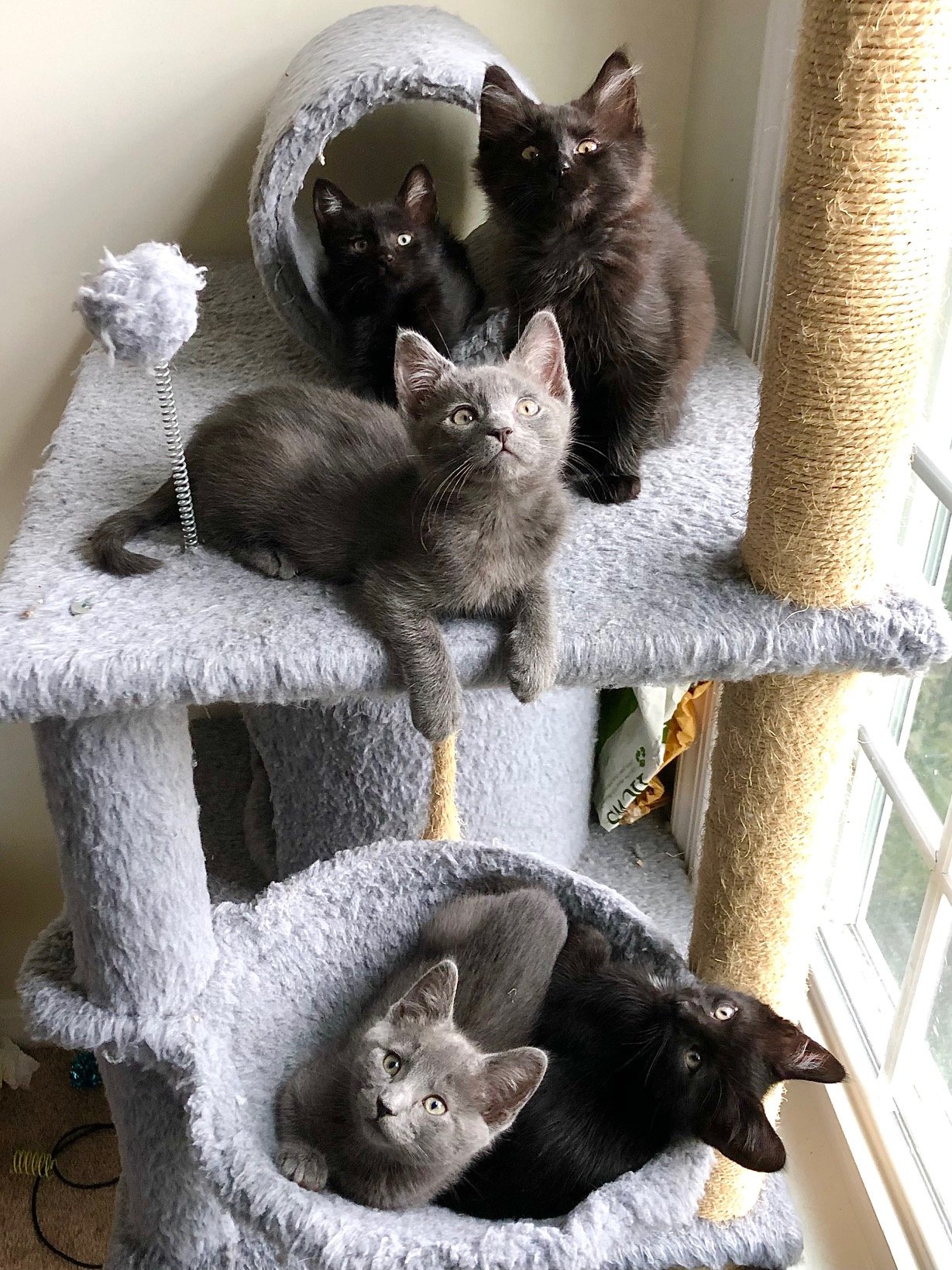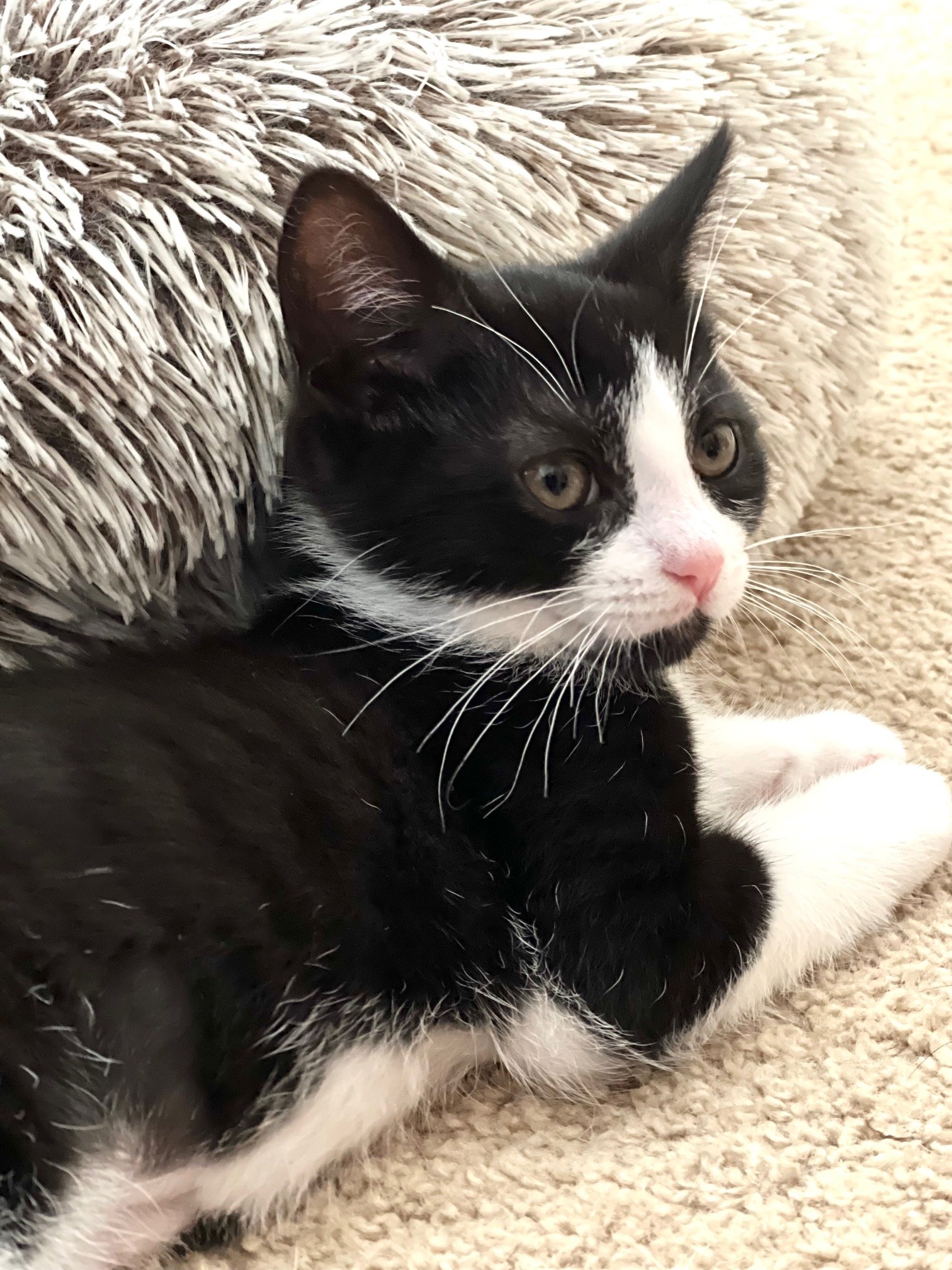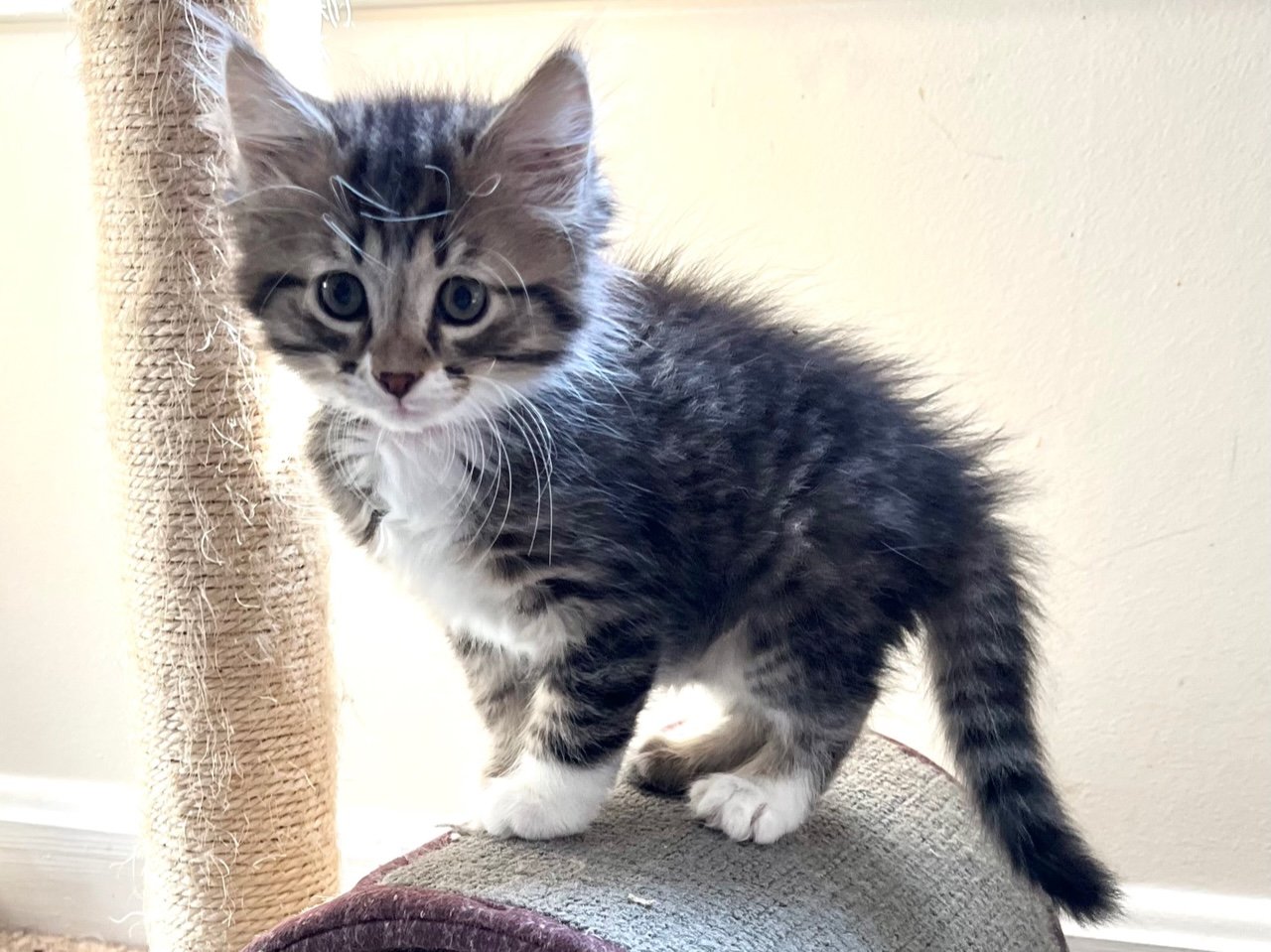Issue # 1
Unmanaged cat populations increase at an overwhelming rate
Feral cats are the offspring of stray or abandoned household pets. Raised without human contact, they can revert to a wild state within one generation and form colonies wherever food and shelter are available. Many city and county animal control agencies were mandated only to deal with dogs—not cats—for decades which resulted in a population surge.
Recent estimates quote the current global cat population around 600 million recognizing 370 million of those cats as pets. The calculation for feral or stray cats is 230 million in the world, and scientists estimate up to 160 million feral cats reside in the U.S. alone. It is believed that less than 3% of feral or stray cats in the U.S. have been spayed or neutered, but a national study found that 80% of pet cats are sterilized at some point.
In Southern Maryland, kittens as young as 6 months old can have litters of 4, on average (but up to 12), twice annually. Despite the high rate of predation and mortality for an outdoor cat, especially a kitten, one cat, her mate, and all of their offspring, producing 2 litters per year, with a 2.8% survival rate will total 11,000 cats in 5 years and 11 million cats in less than 10 years.
Research indicates that targeted Trap-Neuter-Vaccinate-Return (TNVR) within multiple areas of a community is the only way to truly reduce free roaming cats in a community. TNR/TNVR that is not targeted may not reduce the number of cats to make enough of an impact on population control due to cat migration and high rate of growth.
Issue # 2
Cats play a vital role in local ecosystems; removing them is a major risk
Respecting an ecological balance is more involved than the predator vs. prey dynamic. Although opponents of Trap-Neuter-Vaccinate-Return (TNVR) say that removing feral cats would “protect” other species, this issue is misunderstood. For example, a cat eradication effort on Amsterdam Island in the Indian Ocean resulted in a spike in the rat and mouse population which then preyed on the bird population. Another such effort on Macquarie Island in the Pacific Ocean found that the rabbit population spiked dramatically once the cats were gone. Local vegetation was devastated by a rabbit feeding frenzy, and other animal species were then threatened by the loss of food and habitat.
Research shows cats to be mainly scavengers, not hunters, feeding mostly on garbage scraps or food provided by caregivers. When they do hunt, cats prioritize injured or weak prey and prefer rodents and other burrowing animals. Samples show these mammals appear three times more often in the diets of feral cats than birds. Additionally, predation studies indicate that when cats, rodents, and birds coexist, they find a balance. However, when cats are removed, rodent populations flourish and bird populations see a corresponding decline.
Issue # 3:
Animal shelters are no place for a feral cat
Cats are more likely to enter a shelter without owner identification, which is one reason that more cats than dogs are euthanized. It is estimated that 71% of cats that enter shelters in the USA are put down. For feral or ear-tipped cats, that statistic increases to nearly 100% as intake staff assume the cat is not socialized to humans or will not thrive in an indoor environment. Even though many free-roaming cats are friendly and enjoy being handled by their trusted caretakers, the shelter system is designed to make snap judgments upon intake and those identified as feral are quickly deemed un-adoptable (a waste of limited resources) and not given a chance.
Can a feral cat transition to an indoor home environment? There are probably some success stories out there, but by and large, feral cats are not socialized to most people and would be very stressed in an indoor setting. Feral kittens that are still young enough to be socialized to people can become adoptable as seen in BCC’s very own rescue initiative here.
The broader issue around the world is that dog and cat populations far outnumber the amount of homes for them. By keeping feral cats outside, there is still a high risk of predation, starvation, illness and injury, but they have better survival skills than the typical house cat, and so their chance of surviving the numerous outdoor threats is greater than being killed at a shelter. This dilemma is at the root of the TNR mission - to reduce the feral cat population with an aggressive sterilization program. In many cases, governments recognize the effectiveness of local TNR groups and so contribute financial grants to help support these organizations. In Maryland, The Department of Agriculture has been funding spay/neuter grants for several year. BCC has been the recipient of those grant funds.
issue #4:
Dumped house cats struggle to adapt to a feral lifestyle
Possible euthanasia for cats surrendered to municipal shelters and the common situation when all of the local rescues and no-kill shelters are full can cause desperate people to “dump” their unwanted house cat outside where they expect the cat will fend for itself. The reason why so many people, even more-so during the COVID-19 pandemic, choose this fate for their pet is the wrongful assumption that an indoor cat can survive just as well outdoors (in nature). The truth is, a domestic cat lacks necessary survival skills to survive in the wild for any prolonged time. The lifestyle of a domestic cat versus a feral cat is strikingly different, and in addition to feeling lost and confused, an abandoned house cat will expend a lot of its energy trying to return home. It takes 21 days, in general, for most cats to accept a new outdoor environment, so a dumped house cat is unlikely to stay where its owner chooses to abandon it.
While felines are equipped with some predatory tendencies, a cat that has not spent any time outdoors will not know how to properly defend itself, hunt for food, or survive against the elements. Outside, many species unknown to the domestic cat will threaten its life. That ranges from hawks, snakes, raccoons, foxes, coyotes or even bigger animals like bobcats and cougars. Disease transmission, infections due to injury, or the inability to hunt for food due to injury are real risks for cats outdoors, and then there are human threats such as cars, poisons and violent crimes too. If the domestic cat is declawed, it cannot defend itself at all. Consider that a dumped house cat has no way of getting medical help, and injured cats are very hard to catch.
There is also a misconception that cats are born knowing how to hunt. In fact, cats need to be taught by their mothers or other adult cats on how to maintain a reliable food source in nature. Extreme heat will increase water intake and cause any cat to reduce activity which makes the timeframe for finding food each day more restricted. Extreme cold also poses incredible hardship for cats outdoors without adequate shelter (and depending on the breed). BCC attempts to provide and maintain discrete winter shelters at managed colonies for this reason. Overall, dumped house cats will remain close to suburban areas and will have much shorter lifespans.





